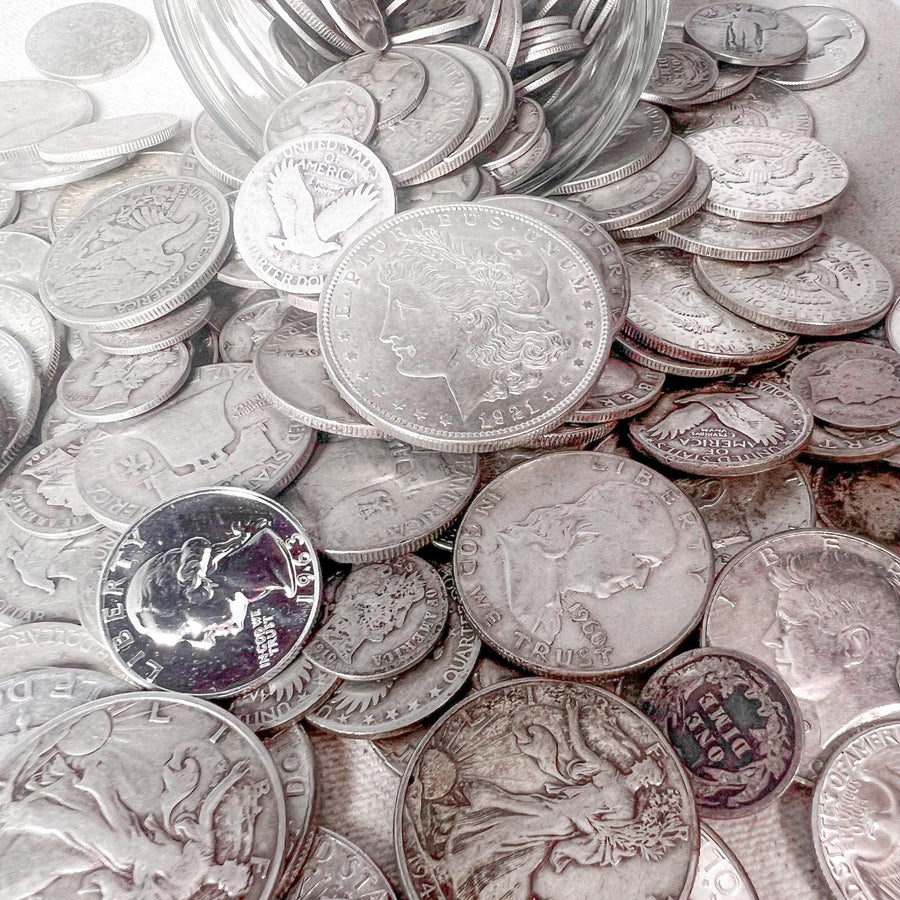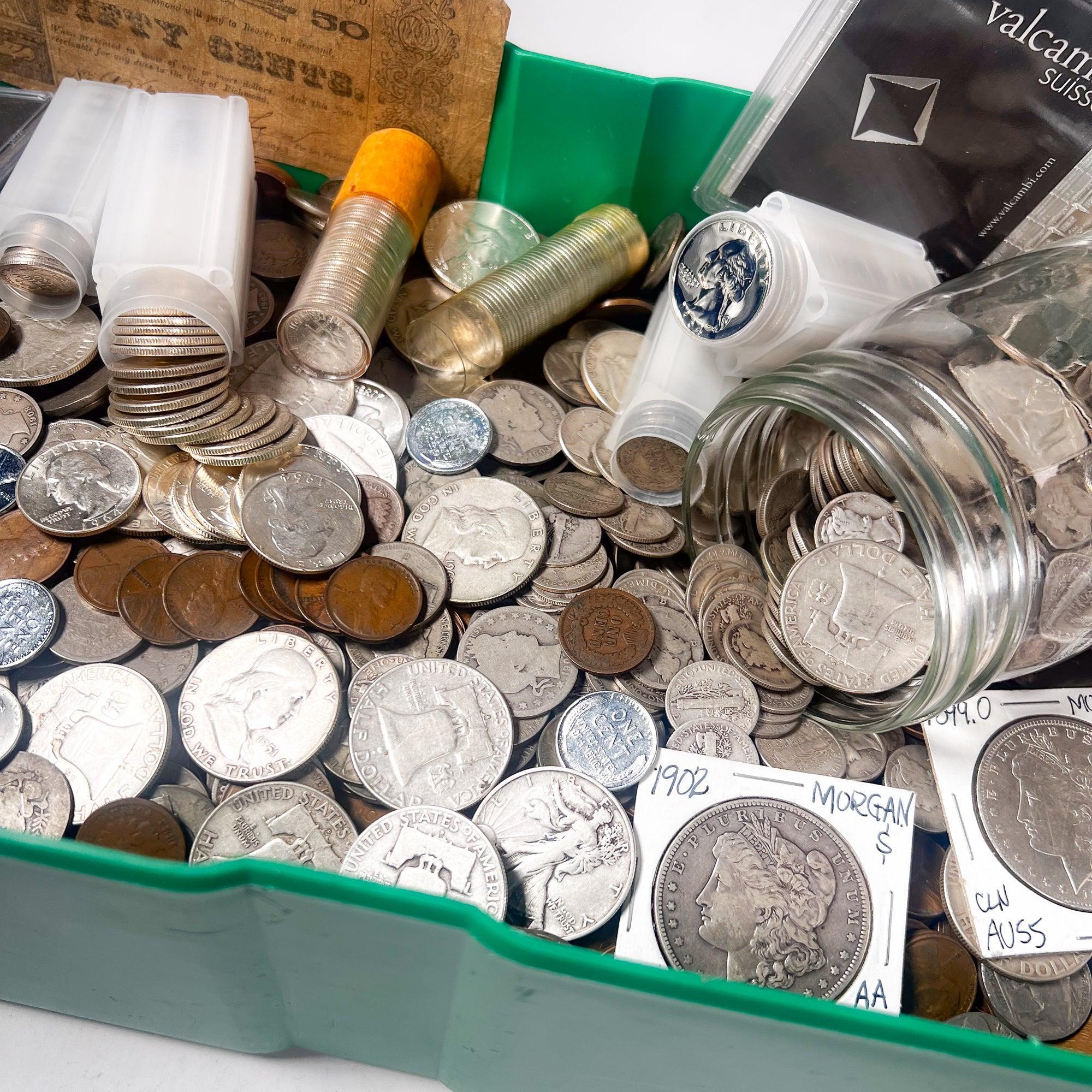Hidden Gems: A Deeper Dive into Wheat Penny Varieties and Errors
So, you’ve started looking at the back of your pocket change and can now spot a Wheat Penny from a mile away. You know the basics: minted from 1909 to 1958, featuring Lincoln on the front and wheat stalks on the back. But the real thrill of collecting begins when you move beyond simply filling a date slot and start hunting for the unusual, the rare, and the historically significant varieties.
Here at Midwest Precious Metals Exchange, we love the stories these coins tell. Let's uncover some of the most exciting hidden gems you can find in the world of Wheat Pennies.
Why are Some Wheat Pennies Silver-Colored? The Story of the 1943 Steel Cent
This is one of the most common questions we get, and for good reason! If you find a "silver" penny dated 1943, you've found a genuine piece of World War II history.
-
What is a 1943 Steel Penny? During the height of WWII, copper was a critical material for the war effort, used in shell casings, wiring, and other military equipment. To conserve this vital metal, the U.S. Mint switched to producing pennies on zinc-coated steel planchets for one year only: 1943. These are known as Steel Cents or "Steelies."
-
Are 1943 Steel Pennies Rare? No. Over one billion steel cents were minted across the Philadelphia, Denver, and San Francisco mints. However, because they were prone to rust and wear, finding one in brilliant, uncirculated condition is much less common and carries a higher premium.
-
Is There Such a Thing as a 1943 Copper Penny? Yes, and it is the holy grail for Wheat Penny collectors! A handful of copper planchets from 1942 were accidentally left in the minting hoppers and were struck with the 1943 date. These are exceedingly rare and extremely valuable, often fetching six-figure prices at auction. Always authenticate any potential 1943 copper penny, as fakes (copper-plated steel cents or altered dates) are common. A simple magnet test is your first step; a real copper cent will not stick to a magnet, while a steel cent will.
What are the "Shell Case Cents" of 1944-1946
The story of wartime pennies doesn't end in 1943. As the war progressed, the military began recycling spent artillery shell casings. These casings, made of a copper-brass alloy, were provided to the U.S. Mint to be used for penny production.
-
Why is this Special? From 1944 to 1946, pennies were struck on planchets made from this recycled wartime material. While they look like normal copper pennies, they carry a fascinating historical link to the battlefields of WWII. Sometimes, the alloy composition can be slightly different, giving these coins a unique color or tone. They aren't rare, but their story adds a rich layer to any collection.
Understanding Mint Marks: Why "Where" Matters So Much
We mentioned mint marks in our first post, but their importance cannot be overstated. A simple one-letter stamp can be the difference between a coin worth a few cents and one worth thousands of dollars.
-
Where is the Mint Mark on a Wheat Penny? Look on the obverse (front) of the coin, right below the date.
-
What are the Different Mint Marks?
-
No Mint Mark: This indicates the coin was minted in Philadelphia, which was the main U.S. Mint.
-
D: This stands for the Denver Mint.
-
S: This stands for the San Francisco Mint.
-
The production numbers varied wildly between mints each year. For example, in 1914, the Philadelphia mint produced over 75 million pennies. The Denver mint, however, produced only about 1.2 million, making the 1914-D a major key date in the series.
What Does "VDB" on a 1909 Penny Mean?
If you find a penny from 1909, the very first year of issue, you need to check the reverse immediately.
-
The Story of VDB: The designer of the Lincoln Cent was Victor David Brenner. As was customary, he placed his initials, "VDB," on his creation. They are located at the very bottom of the reverse, between the bases of the wheat stalks. However, shortly after its release, some members of the public felt the initials were too prominent, like an advertisement. The Mint quickly removed them, creating several varieties for the first year:
-
1909 VDB: The initial design with the initials.
-
1909 (No VDB): The revised design without the initials.
-
1909-S VDB: The rarest of the bunch. Minted in San Francisco with the initials, it had a tiny mintage of only 484,000, making it one of the most famous and sought-after coins in American history.
-
The initials "VDB" did return to the penny in 1918, but in a much smaller form on the obverse, at the base of Lincoln's shoulder, where they remain to this day.
What Other Errors Should I Look For?
Beyond the famous 1955 Doubled Die, there are many other fascinating minting errors to hunt for:
-
Re-Punched Mint Marks (RPMs): Before 1990, mint marks were punched into the dies by hand. Sometimes, the worker would punch it more than once, creating a noticeable doubling or split in the "D" or "S."
-
Off-Center Strikes: If the coin wasn't perfectly centered when it was struck, the design will be off-center, leaving part of the coin blank.
-
Lamination Errors: If impurities in the metal alloy cause it to separate, a piece of the coin's surface can flake or peel away.
Your Collection is a Journey of Discovery
Collecting Wheat Pennies is more than just an investment; it's a treasure hunt through American history. Every coin has the potential to be a rare variety, a wartime relic, or a fascinating minting error. The key is to look closely and know what you're looking for.
Ready to start your own treasure hunt or find that one special coin to complete your set? Explore our curated selection of Wheat Pennies and discover the hidden gems waiting for you.
Shop for Your Next Discovery at Midwest Precious Metals Exchange!












